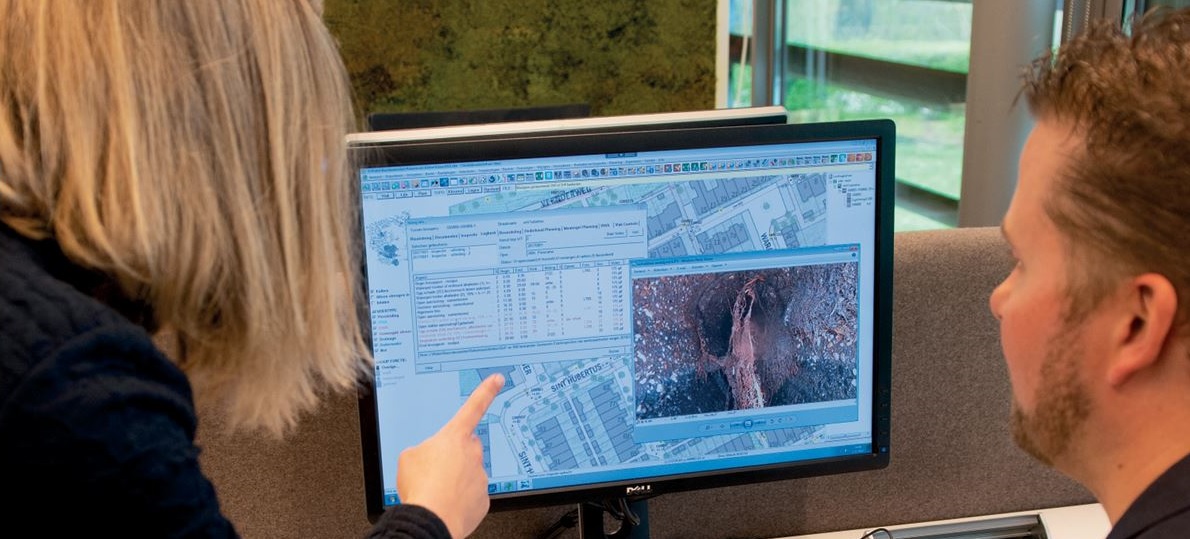The rational decision making process in management
Rational decision making is the opposite of intuitive decision making. It is a strict procedure utilising objective knowledge and logic. It involves identifying the problem to solve, gathering facts, identifying options and outcomes, analysing them, considering all the relationships and selecting the decision.BrutIS contains tools to collect data, inspect and assess conditions and to plan measures based on established goals and standards. These are rational decision making tools:
Collect data:
Data is often already available in many forms, but has not yet been made available in the management system.
BrutIS contains functions to read data from other databases, SHP, DXF, CSV, GML, XML, KML files, create interfaces and convert them into management system data.
Missing data can easily be supplemented via the mutation functions.
Inspection:
BrutIS uses the coding system according to NEN-EN 13508-2+A1 to determine the condition of the sewer system. Adn the CROW Road Management method voor coding conditions of pavements.
The program includes inspection functions to register the condition of drains, sewers, manholes, inspection chambers and pavement of roads.
Tactical Assessment:
Via the decision support system (DSS) in BrutIS, you immediately get an overview of the locations where further investigation, maintenance or replacement is required, and in which period this should take place.
By assessing, the measures proposed by the DSS are determined and/or adjusted.
The DSS uses intervention and warning measures, established in the strategic planning of BrutIS, where the goals and risks are determined in relation to budgets. It is important that there is cost coverage.
Maintenance measures can be planned immediately after inspection. A tactical need for measures is drawn up for the heavier and more expensive replacements and improvement measures, so that the manager can immediately respond to opportunities in the public space.
Operational Planning:
It is important to know for which components operational budgets have already been established, so that these components are not included in determining the budgets for the need for tactical measures.
To carry out:
As soon as measures have been implemented, the as-build data is processed in the system.
And the management cycle begins again.




